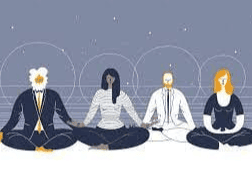Explore how holistic health and biohacking practices like cold plunging, intermittent fasting, and personalized nutrition are revolutionizing wellness. Discover how to align body, mind, and spirit for lasting vitality and longevity.
In today’s world, wellness is no longer confined to diet charts and gym routines. A deeper, more integrated approach is gaining momentum—holistic health that honors the full spectrum of human experience: body, mind, and spirit. Alongside it, a seemingly futuristic ally has emerged—biohacking, the practice of optimizing health and longevity using science, data, and self-experimentation.
Together, these two worlds—one ancient, one cutting-edge—are converging to create a new vision of well-being. One that is intuitive yet evidence-based, spiritual yet strategic.
The Rise of Holistic Health:
At its core, holistic wellness is about viewing the body as a system in harmony, not a collection of parts to be managed. It recognizes that emotional states affect digestion, that beliefs shape biology, and that the health of the soul matters just as much as lab results.
This mindset is no longer niche. Meditation, yoga, energy healing, and herbal medicine have moved into the mainstream. But now, they’re being paired with modern tools and practices that allow for deeper personalization and tangible outcomes.
Enter Biohacking: Wellness with Data:
Biohacking takes the curiosity of the wellness seeker and adds the lens of precision. It asks: How can I use data to know myself better? and What protocols can I follow to perform at my best—physically, mentally, and emotionally?
Some of the most popular biohacking practices today include:
Cold Plunging: Immersing the body in ice-cold water activates the parasympathetic nervous system, boosts mood through endorphins, and strengthens immunity. While ancient cultures practiced cold exposure for spiritual purification, today’s biohackers use it to enhance recovery, focus, and resilience.
Intermittent Fasting: This isn’t just a diet trend—it’s a metabolic reset. Periods of fasting allow the body to enter autophagy (cellular cleansing), balance insulin levels, and reduce inflammation. From religious traditions to Silicon Valley wellness routines, fasting has found renewed relevance.
Personalized Nutrition: No more one-size-fits-all. With DNA testing and microbiome analysis, people are tailoring their diets to their genetic makeup and gut health. This level of customization helps prevent chronic disease, improve mood, and boost energy in highly targeted ways.
What sets modern biohacking apart is its synergy with holistic living. It’s not about chasing perfection—it’s about tuning in. Tracking heart rate variability might go hand-in-hand with daily breathwork. A grounding walk may complement a nootropic supplement. Data becomes a guide—not a dictator—for conscious living.
Mind, Body, Spirit—Optimized:
At the heart of this movement lies a powerful truth: wellness isn’t about control—it’s about alignment. Holistic biohackers are seeking not just to live longer, but to live deeper. To wake up clear-minded. To eat in ways that energize. To rest in ways that heal. To cultivate inner peace alongside peak performance.
This is the new wellness paradigm: where wisdom meets technology, and where the most revolutionary act might be to know yourself—fully, lovingly, and in balance.
Because in the end, the greatest upgrade isn’t just a stronger body or a sharper mind. It’s a life lived with clarity, vitality, and soul.

